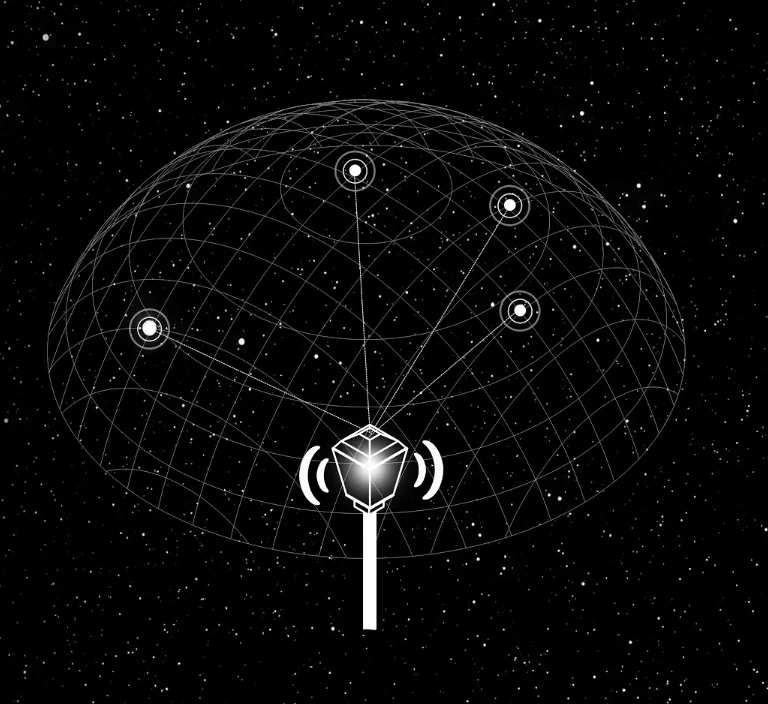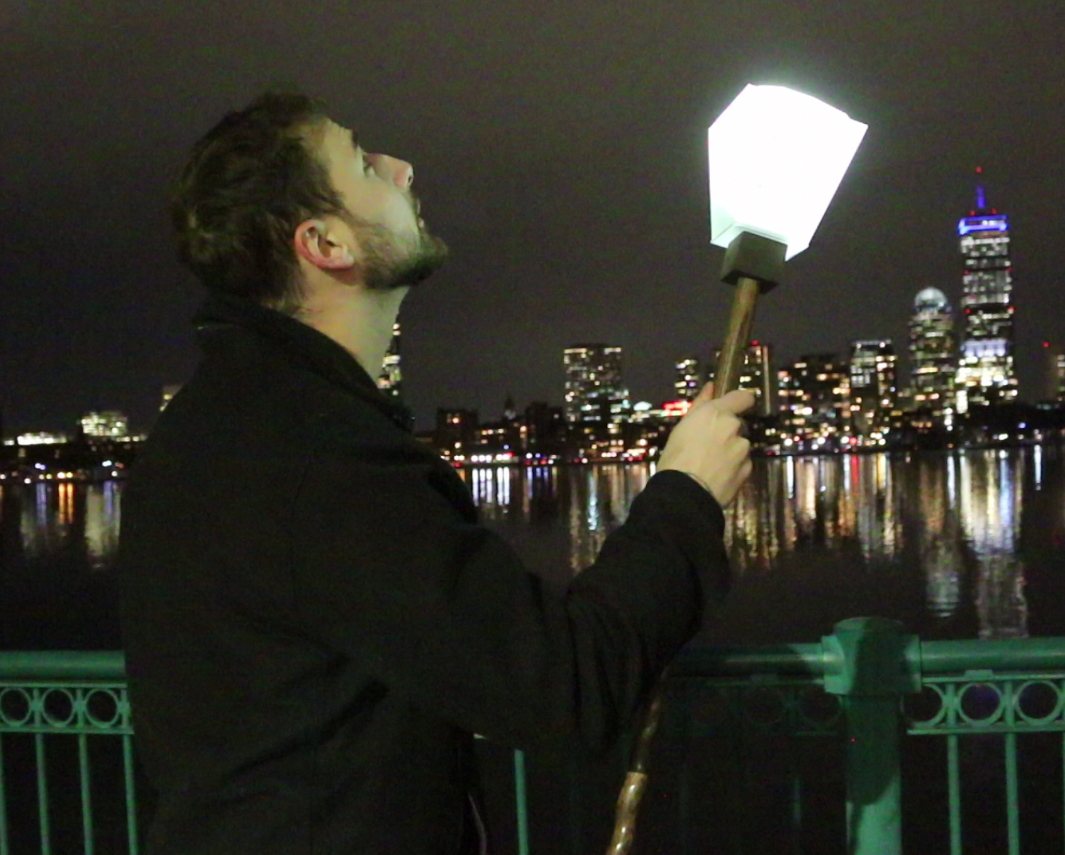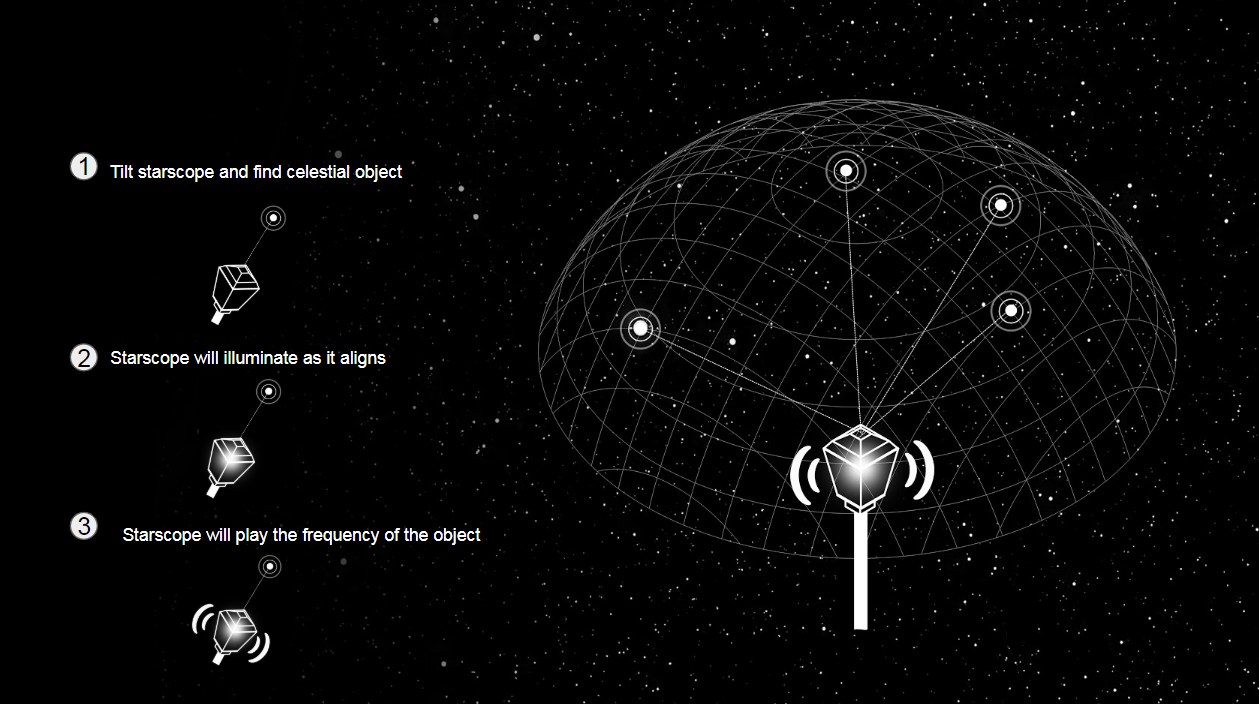StarScope
AT
MIT Media Lab
RANGE OF WORK
Tangible Interfaces, AR
ABOUT
Starscope is a magic staff that allows the holder to hear real sounds of stars and other astronomical bodies in the sky. Starscope began as a project to help our visually impaired friends participate in stargazing and hobbyist astronomy, however, it has proved to be a fantastic tool for sighted stargazers as well. The starscope uses GPS, a gyroscope, and star location data to create a “hit field” of sound around important stars, so that users can find and pinpoint the appropriate sector of the sky by the strength of the sound emitted and the vibration of the staff. Starscope draws on data from astrophysics research, including asteroseismological recordings and light graphs converted to audio, providing the user access to the sounds of the universe. Some space sounds can get a bit scary, so there is also a “musical” setting of delicate notes and chords. Starscope reveals the symphony of the night sky.
Challenge
Create a way for ameature astronomers to find the stars, whether they can see them or not. Create a device that allows for seamless interaction and fun between both sighted people and vision impaired people.
Affordances
The main affordances of the Starscope comes from its staff form. The staff form encourages the user to use the Starscope while keeping the Starscope rooted on the ground. This resting position prevents arm fatigue and enables a stable pointing gesture. The illuminating head of the staff gives a directionality to the Starscope so that the user can use the head as a cursor to point to the skies like a flashlight or laser pointers used by stargazers. The sound holes on two sides of the staff heads gives a clue that the Starscope makes sound and brings the user to lean in to listen. Star finding with the staff proved a crucial point at which many affordances needed to be considered. To find a star, users scan the sky. It is important that users be given a hint that they are closing in on a star, so that they are driven to continue their searching behavior. This is created by establishing a “hit field” around the chosen star, a gradient of intensity for all of the staff’s feedback modalities, so that it is clear that the user is closing in on a star. As the user scans the sky, they will find the sound emitted from the staff will get louder or softer as they near a particular star, in sync with additional changes in vibration (felt through the wooden body of the staff) and light pulse intensity. The audio and tactile feedback of the staff makes it easily accessible to vision-impaired users, while the light gives feedback to nearby stargazers and sighted users alike. The light can be dimmed as needed for stargazing.
Function
Fabrication
The Starscope is designed to be the simplest form of a staff head, which can be attached to most walking sticks. The head is divided into three parts: the body, the top cover and the connecting neck. The body is a house for the electronic parts, complete with holes for sound, and the top cover is a square gem form. It is made from cut and frosted acrylic.
Sound Sources
Collaborators
Stephan Hernandez: Concept generation, fabrication, wood working, research
Xiyaoan Shen: Electronic components, coding
Agatha Park: 3D modeling and laser cutting, design sketches, fabrication, video editing
Christine Mazzola: Star sound processing
Maggie George: Concept sketches, staff design, fabrication, sound sourcing, research






